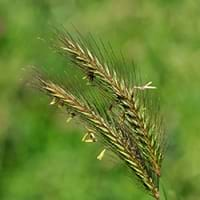Life Span
Perennial
Perennial
Origin
North America, United States, Northeastern United States, Mid-Atlantic United States, Southeastern United States, Canada
North America, South America, Europe, Southern Africa, Asia
Types
Red chokeberry, Purple chokeberry
Not Available
Habitat
Anthropogenic, Boggy areas, Cliffs, Fens, Swamps, Terrestrial, Wet lands, Woodlands
meadows, Pastures, Wet lands
USDA Hardiness Zone
3-8
Not Available
AHS Heat Zone
8-1
Not Available
Sunset Zone
A2, A3, 1a, 1b, 2a, 2b, 3a, 3b, 4, 5, 6, 7
Not Available
Habit
Thicket/Colonizing
Not Available
Minimum Height
Not Available
Minimum Width
Not Available
Flower Color
Not Available
Yellow Brown
Flower Color Modifier
Not Available
Bicolor
Fruit Color
Purplish-black
Not Available
Leaf Color in Spring
Not Available
Green, Light Green, Blue Green, Gray Green
Leaf Color in Summer
Not Available
Light Green
Leaf Color in Fall
Not Available
Not Available
Leaf Color in Winter
Not Available
Not Available
Leaf Shape
Elliptic
Oblong
Plant Season
Spring, Summer, Fall
Not Available
Sunlight
Full Sun, Partial Sun, Partial shade
Full Sun
Type of Soil
Clay, Loam
Loam, Sand
The pH of Soil
Acidic, Neutral, Alkaline
Not Available
Soil Drainage
Average
Well drained
Bloom Time
Late Spring, Early Summer
Spring, Summer
Tolerances
Not Available
Deer resistant, Drought, Salt
Where to Plant?
Ground, Pot
Ground
How to Plant?
Cuttings, Divison, Seedlings
Seedlings
Plant Maintenance
Medium
Medium
Watering Requirements
Average Water Needs, Do Not over Water, Requires regular watering
Keep the ground moist but not water-logged
In Summer
Lots of watering
Less Watering
In Spring
Moderate
Moderate
In Winter
Average Water
Lots of watering
Soil pH
Acidic, Neutral, Alkaline
Not Available
Soil Type
Clay, Loam
Loam, Sand
Soil Drainage Capacity
Average
Well drained
Sun Exposure
Full Sun, Partial Sun, Partial shade
Full Sun
Pruning
Prune after flowering, Remove branches that rub together, Remove damaged leaves, Remove dead branches, Remove dead leaves, Remove diseased branches by the tool's blades dipped into the alcohol solution
No pruning needed in the early stages, Remove damaged leaves, Remove dead branches, Remove dead leaves
Fertilizers
10-10-10, All-Purpose Liquid Fertilizer, Apply N-P-K
avoid high rate of nitrogen in spring, Nitrogen
Pests and Diseases
Red blotch
Fungal Diseases, Head smut, Leaf rust, Stem rot
Plant Tolerance
Not Available
Deer resistant, Drought, Salt
Flowers
Yes
Not Available
Flower Petal Number
Not Available
Single
Edible Fruit
No
Not Available
Foliage Texture
Not Available
Fine
Foliage Sheen
Not Available
Matte
Invasive
Sometimes
Sometimes
Attracts
Not Available
Bees, Birds, Butterflies
Allergy
Anaphylaxis
Not Available
Aesthetic Uses
Showy Purposes
Ground Cover
Beauty Benefits
Good for skin
Improve skin condition
Environmental Uses
Air purification, Food for birds, Wildlife
Erosion control, Food for animals, soil stabilisation
Medicinal Uses
anti-cancer, Antioxidants, Cold
Not Available
Part of Plant Used
Fruits
Seeds
Other Uses
Pectin
Food for animals
Used As Indoor Plant
No
No
Used As Outdoor Plant
Yes
Yes
Garden Design
Foundation, Mixed Border
Cutflower, Dried Flower/Everlasting, Edible, Wildflower
Botanical Name
ARONIA melanocarpa
Hordeum brachyantherum
Common Name
Black Chokeberry
Meadow Barley
In Hindi
Black Chokeberry Shrub
meadow barley
In German
Schwarz Aronia Strauch
Wiese Gerste
In French
Noir Chokeberry Arbuste
orge prairie
In Spanish
Chokeberry negro Arbusto
cebada prado
In Greek
Μαύρο Chokeberry θάμνων
λιβάδι κριθάρι
In Portuguese
Chokeberry preto Arbusto
cevada prado
In Polish
Krzew aronii
łąka jęczmienia
In Latin
Lichen Frutex
pratum hordei
Phylum
Magnoliophyta
Magnoliophyta
Class
Magnoliopsida
Liliopsida
Clade
Angiosperms, Eudicots, Rosids
Angiosperms, Commelinids, Monocots
Tribe
Maleae
Not Available
Subfamily
Amygdaloideae
Not Available
Number of Species
Not Available
Not Available
Season and Care of Black Chokeberry and Meadow Barley
Season and care of Black Chokeberry and Meadow Barley is important to know. While considering everything about Black Chokeberry and Meadow Barley Care, growing season is an essential factor. Black Chokeberry season is Spring, Summer and Fall and Meadow Barley season is Spring, Summer and Fall. The type of soil for Black Chokeberry is Clay, Loam and for Meadow Barley is Loam, Sand while the PH of soil for Black Chokeberry is Acidic, Neutral, Alkaline and for Meadow Barley is Not Available.
Black Chokeberry and Meadow Barley Physical Information
Black Chokeberry and Meadow Barley physical information is very important for comparison. Black Chokeberry height is 182.88 cm and width 182.88 cm whereas Meadow Barley height is Not Available and width Not Available. The color specification of Black Chokeberry and Meadow Barley are as follows:
Black Chokeberry flower color: Not Available
Black Chokeberry leaf color: Not Available
Meadow Barley flower color: Yellow Brown
- Meadow Barley leaf color: Green, Light Green, Blue Green and Gray Green
Care of Black Chokeberry and Meadow Barley
Care of Black Chokeberry and Meadow Barley include pruning, fertilizers, watering etc. Black Chokeberry pruning is done Prune after flowering, Remove branches that rub together, Remove damaged leaves, Remove dead branches, Remove dead leaves and Remove diseased branches by the tool's blades dipped into the alcohol solution and Meadow Barley pruning is done No pruning needed in the early stages, Remove damaged leaves, Remove dead branches and Remove dead leaves. In summer Black Chokeberry needs Lots of watering and in winter, it needs Average Water. Whereas, in summer Meadow Barley needs Less Watering and in winter, it needs Lots of watering.





